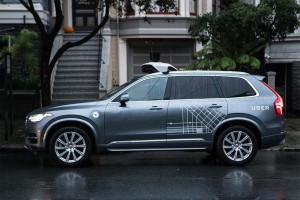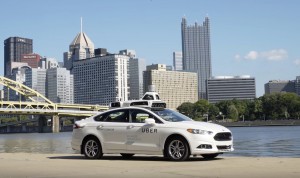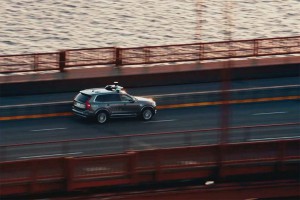Ride-sharing service Uber has been ordered by California regulators to halt the public test of autonomous vehicles until the company gets what the state claims is the necessary permit.
Uber on Wednesday began offering rides in San Francisco using specially modified versions of the Volvo XC90 SUV. Though nearly two dozen other companies have so far received permits from the California Department of Motor Vehicles, Uber officials said they are not required to get one. DMV officials have vociferously disagreed and have sent a warning to the company.
“If Uber does not confirm immediately that it will stop its launch and seek a testing permit, DMV will initiate legal action,” DMV attorney Brian Soublet wrote in a letter to Anthony Levandowski, head of Uber’s autonomous car programs.
(For more on the Uber San Francisco project, Click Here.)
Uber has been an active proponent of both autonomous vehicle technology, as well as even more advanced driverless vehicle systems. The company’s CEO Travis Kalanick has said that by eliminating the driver, Uber would eventually be able to bring the cost of a ride down to a point so low it would be less expensive to use a ride-sharing service than to own a personal vehicle.
In September, the company began fielding a small fleet of autonomous Ford Fusion Hybrids in Pittsburgh, where it operates a research and development center. The San Francisco experiment involves 11 specially modified Volvo XC90s equipped with laser, radar and other sensors. The goal. according to Levandowski, is to test the system’s capabilities in a variety of different conditions. San Francisco not only has heavy traffic, but lots of pedestrians, bicyclists and mass transit.
Despite the fact that Levandowski told USA Today, “We expect the majority of these rides to take place in self-driving mode,” he also told reporters that Uber didn’t feel it needed permits because “Our technology is not autonomous technology.”
Uber officials have not responded to a request from TheDetroitBureau.com to explain why the company thinks that even occasionally offering rides in hands-free mode does not count as “autonomous,” and thus not require a permit.
The ride-sharing company, the country’s largest, has frequently found itself at odds with regulators in the U.S. and abroad. It has vigorously fought efforts to regulate its operations, as well as to require that its drivers be subject to the same level of security checks as those operating taxis and other conventional livery vehicles.
How far it will go to resist the DMV’s push-back on the San Francisco test is unclear, but at the launch of the San Francisco pilot, Levandowski said, ‘This is where science and logic needs to trump blind compliance.”
(Toyota invests in car-sharing start-up. Click Here for the story.)
Analysts suggest that beyond a knee-jerk corporate resistance to regulation, Uber may see other reasons to avoid getting the requisite permit.
Saving the $150 fee is likely the least significant reason. By operating on its own, however, Uber would sidestep state rules that require anyone testing autonomous vehicles to report when an accident occurs. Even a situation that requires the human “operator” to simply take back manual control must be reported to the state. That was why it came out earlier this year that Google has experienced around 20 mostly minor crashes with its autonomous vehicle test fleet.
(Google, FCA plan to launch autonomous ride-sharing pilot program. Click Here for more.)




We don’t need no stinkin permit in Michigan! Yipes.